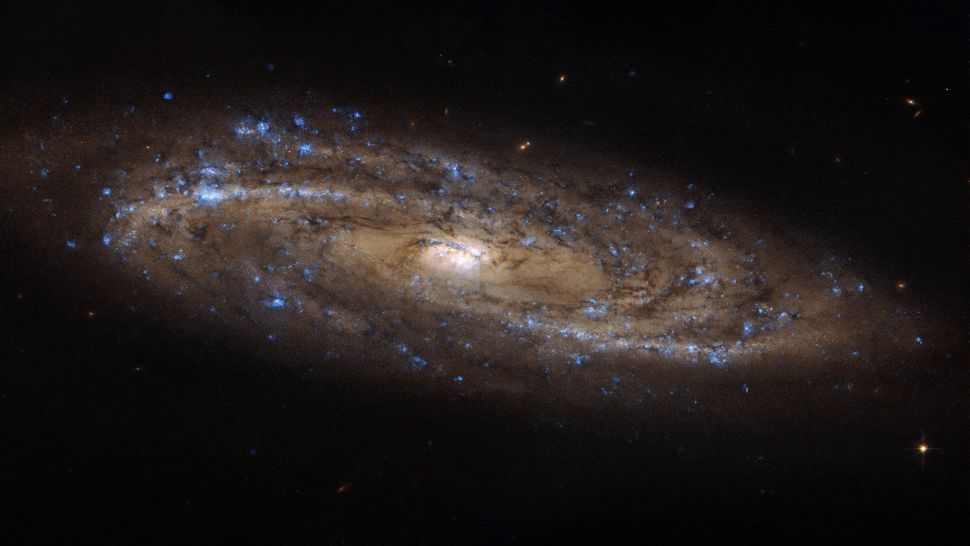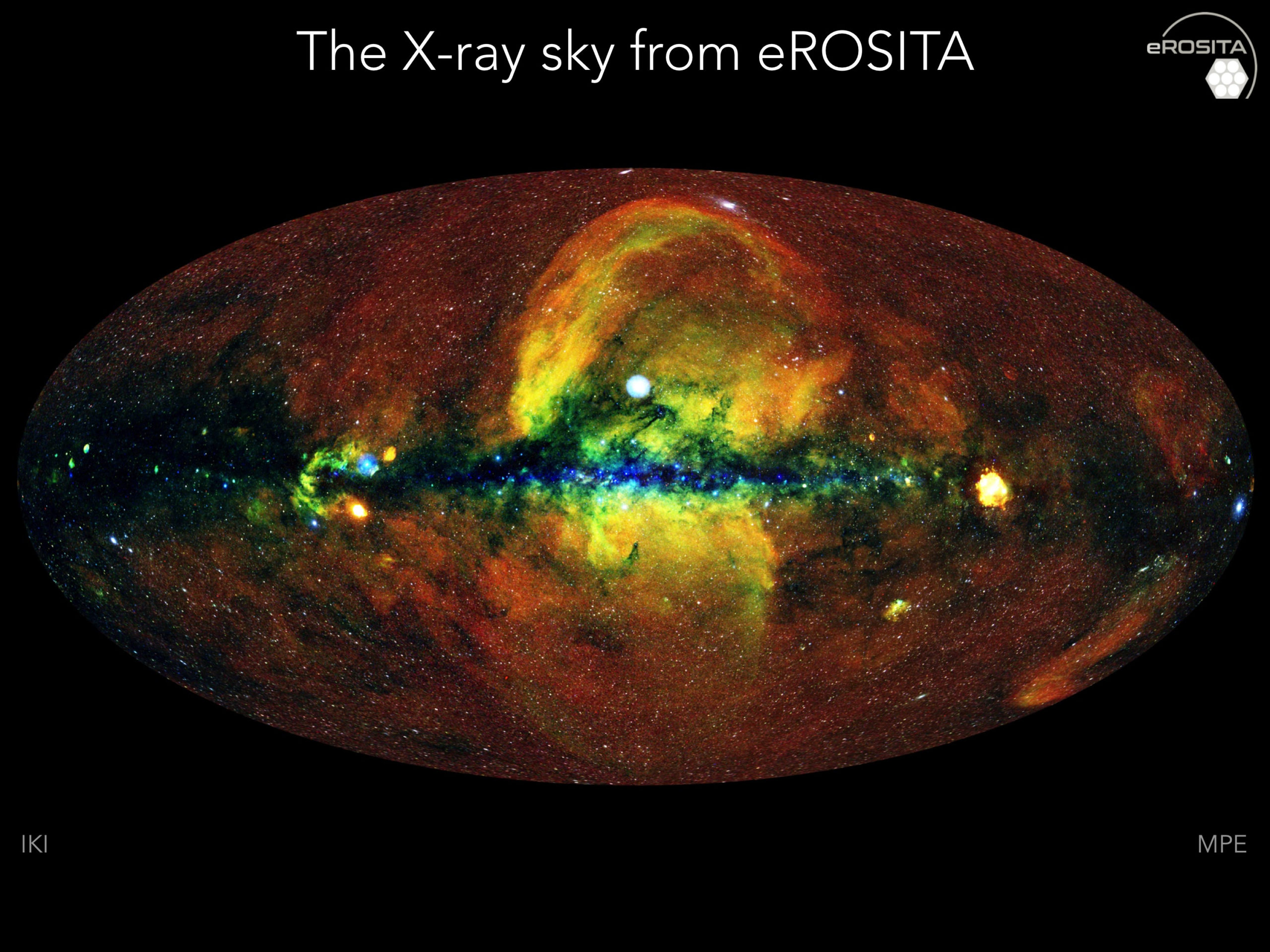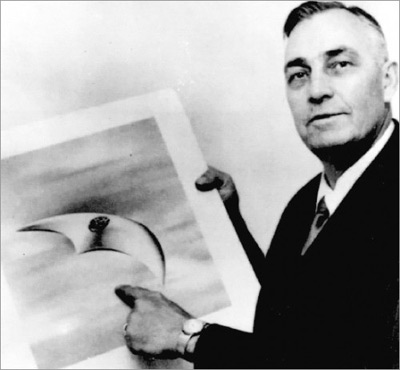Blog
June 24, 1947: They Came From … Outer Space?
1947: Pilot Kenneth Arnold sights a series of unidentified flying objects near Washington’s Mount Rainier. It’s the first widely reported UFO sighting in the United States, and, thanks to Arnold’s description of what he saw, leads the press to coin the term flying saucer.
Arnold was an experienced pilot with more than 9,000 hours of flying time. He had diverted from his flight plan – Chehalis to Yakima, Washington – to search for a Marine Corps C-46 transport plane reported down in the Cascades near the southwest slope of Mount Rainier. A sweep of the area revealed nothing, and Arnold resumed his original course.
As Arnold recalled, the afternoon was crystal clear, and he was cruising at an altitude of 9,200 feet. A minute or two after noting a DC-4 about 15 miles behind and to the left of him, he was startled by something bright reflecting off his plane. At first he thought he had nearly hit another aircraft but as he looked off in the direction the light had come from, he saw nine “peculiar-looking” aircraft flying rapidly in formation toward Mount Rainier.
more...Friday, May 1, 2020: A new image from the Hubble Space Telescope features the sparkling spiral galaxy NGC 4100, which is teeming with baby stars. The galaxy’s spiral arms are speckled with pockets of bright blue starlight radiating from hot newborn stars. NGC 4100 is located about 67 million light-years from Earth in the constellation Ursa Major, and it belongs to a group of galaxies called the Ursa Major Cluster. It’s about three-quarters the size of the Milky Way, which is also a spiral galaxy, and it “looks almost stretched across the sky” in this new view, Hubble scientists said in a statement. The space telescope captured this image using its Advanced Camera for Surveys, and it was released today (May 1).

Derrick “Duckie” Simpson , born June 24, 1950 in Kingston , Jamaica , is a Jamaican reggae singer . He was one of the founders of the reggae band Black Uhuru , who received reggae history’s first grammy in 1985. Duckie Simpson has almost always been in some of the Black Uhurus’s different constellations over the years, but has remained in the background and been the band’s “anchor” while others have taken the places as a lead singer.
Black Uhuru was founded by vocalists Simpson, Ervin “Don Carlos” Spencer and Rudolph “Garth” Dennis in the late 1960s. Everyone was raised in the slum district of Waterhouse in Kingston’s inner city. At the end of the 1970s, Don Carlos and Garth Dennis had been replaced by the talented Michael Rose (First Vocalist), also from the Waterhouse, and the American Sandra “Puma” Jones . The drummer Sly Dunbar and the bassist Robbie Shakespeareresponded to production and new, creative grips, and the band lifted and became the world’s leading reggae band in the years 1983-85. The album Anthem was released in an original version in 1983, blended for an American and European audience in 1984, and it was this remixed version that received the Grammy Award for this year’s best reggae album.
In 1985, Michael Rose left Black Uhuru for a solo career and was replaced by Junior Reid , and Puma Jones died of breast cancer in 1989. In 1990, Simpson took in the two original members Spencer and Dennis for a new constellation.
more...Michael John Kells Fleetwood (born 24 June 1947) is a British musician and actor, best known as the drummer, co-founder, and de facto leader of the rock band Fleetwood Mac. Fleetwood, whose surname was merged with that of the group’s bassist John “Mac” McVie to form the name of the band, was inducted into the Rock and Roll Hall of Fame in 1998.
Born in Redruth, Cornwall, Fleetwood lived in Egypt and Norway for much of his childhood years as his father travelled with the Royal Air Force. Choosing to follow his musical interests, Fleetwood travelled to London at the age of 15, eventually combining with Peter Green, Jeremy Spencer and Bob Brunning, at Green’s behest, to become the first incarnation of Fleetwood Mac. Fleetwood would remain the only member to stay with the band through its ever-changing line-up.
After several album releases and line-up changes, the group moved to the United States in 1974 in an attempt to boost the band’s success. Here Fleetwood invited Lindsey Buckingham and Stevie Nicks to join. Buckingham and Nicks contributed to much of Fleetwood Mac’s later commercial success, including the celebrated album Rumours, while Fleetwood’s own determination to keep the band together was essential to the band’s longevity. He has also enjoyed a solo career, published written works, and flirted briefly with acting and vinification, as well as opened blues-themed restaurants in Alexandria, Virginia and Hawaii.
more...Geoffrey Arnold Beck (born 24 June 1944) is an English rock guitarist. He is one of the three noted guitarists to have played with the Yardbirds (the other two being Eric Clapton and Jimmy Page). Beck also formed the Jeff Beck Group and with Tim Bogert and Carmine Appice, he formed Beck, Bogert & Appice.
Much of Beck’s recorded output has been instrumental, with a focus on innovative sound, and his releases have spanned genres ranging from blues rock, hard rock, and an additional blend of guitar-rock and electronica. Although he recorded two hit albums (in 1975 and 1976) as a solo act, Beck has not established or maintained the sustained commercial success of many of his contemporaries and bandmates. Beck appears on albums by Rod Stewart, Mick Jagger, Tina Turner, Morrissey, Donovan, Diana Ross, Jon Bon Jovi, Malcolm McLaren, Kate Bush, Roger Waters, Stevie Wonder, Les Paul, Zucchero, Cyndi Lauper, Brian May, Roger Taylor, Stanley Clarke, Screaming Lord Sutch, ZZ Top, and Toots and the Maytals.
He was ranked fifth in Rolling Stone‘s list of the “100 Greatest Guitarists of All Time” and the magazine, upon whose cover Beck has appeared three times, has described him as “one of the most influential lead guitarists in rock”. He is often called a “guitarist’s guitarist”.[1] Beck has earned wide critical praise and received the Grammy Award for Best Rock Instrumental Performance six times and Best Pop Instrumental Performance once. In 2014 he received the British Academy’s Ivor Novello Award for Outstanding Contribution to British Music. Beck has been inducted into the Rock and Roll Hall of Fame twice: as a member of The Yardbirds (1992) and as a solo artist (2009).
more...Terrence Mitchell Riley (born June 24, 1935) is an American composer and performing musician best known as a pioneer of the minimalist school of composition. Influenced by jazz and Indian classical music, his music became notable for its innovative use of repetition, tape musictechniques, and delay systems.
Riley is best known for his 1964 composition In C and 1969 album A Rainbow in Curved Air, both considered landmarks of minimalism and important influences on experimental, rock, and electronic music. Since the 1970s, he has collaborated extensively with chamber ensemble the Kronos Quartet. Born in Colfax, California in 1935, Riley began performing as a solo pianist during the 1950s. During that decade, he studied composition at San Francisco State University, the San Francisco Conservatory, and University of California, Berkeley, studying with Seymour Shifrin and Robert Erickson. He was involved in the experimental San Francisco Tape Music Center, working with Morton Subotnick, Steve Reich, Pauline Oliveros, and Ramon Sender. Throughout the 1960s he also traveled frequently in Europe, taking in musical influences and supporting himself by playing in piano bars.
His most influential teacher was Pandit Pran Nath (1918–1996), a master of Indian classical voice who also taught La Monte Young, Marian Zazeela, and Michael Harrison. Riley made numerous trips to India over the course of their association to study and accompany him on tabla, tambura, and voice. In 1971 he joined the Mills College faculty to teach Indian classical music. Riley also cites John Cage and “the really great chamber musicgroups of John Coltrane and Miles Davis, Charles Mingus, Bill Evans, and Gil Evans” as influences on his work. He was awarded an Honorary Doctorate Degree in Music at Chapman University in 2007.
more...Lester B. Williams (June 24, 1920 – November 13, 1990) was an American Texas blues and electric blues guitarist, singer and songwriter. He is best known for his song “Winter Time Blues” and “I Can’t Lose with the Stuff I Use”. His main influence was T-Bone Walker. Williams released several singles in the 1950s. His recording career lasted from 1949 to 1956, but he remained a stalwart of the Houston blues circuit for decades.
Williams was born in Groveton, Texas. When he was a young boy his family relocated to Houston. After serving in World War II, Williams sang at Houston’s Eldorado Ballroom, but quit and enrolled at the New England Conservatory in Boston, Massachusetts, to study piano and voice. He did not graduate, and he returned to Houston, where he taught himself to play the guitar and started to write songs. Walker’s influence inspired Williams, who said to himself, “I could learn to play guitar and pull in some of that money that T-Bone made”. Having formed his own group in 1949, he wrote “Winter Time Blues”, which came from his own experience when his wife and daughter traveled to Los Angeles for the summer, leaving him to contemplate the winter alone. The song included the lyric “Winter without your baby, you might as well be dead”.
He signed a recording contract with Macy’s Recordings, and Steve Poncio produced “Winter Time Blues” which was a regional hit. His next few releases did not fare well commercially and, by 1951, Williams had moved to Specialty Records. His first disc for them was his biggest success, “I Can’t Lose with the Stuff I Use” (1952). His notability rose to the extent that he appeared in February 1953 at Carnegie Hall, in New York, on a bill that included Dinah Washington, Billy Eckstineand Nat King Cole. The song “I Can’t Lose with the Stuff I Use” was covered a decade later by B.B. King.
more...X-rays are about 1,000 times more energetic than visible light photons and are produced by violent explosions and high temperature astronomical environments. Instead of the familiar steady stars, the sky would seem to be filled with exotic stars, active galaxies, and hot supernova remnants. The featured X-ray image captures in unprecedented detail the entire sky in X-rays as seen by the eROSITA telescope onboard Spektr-RG satellite, orbiting around the L2 point of the Sun-Earth system, launched last year. The image shows the plane of our Milky Way galaxy across the center, a diffuse and pervasive X-ray background, the hot interstellar bubble known as the North Polar Spur, sizzling supernova remnants such as Vela, the Cygnus Loop and Cas A, energetic binary stars including Cyg X-1 and Cyg X-2, the LMC galaxy, and the Coma, Virgo, and Fornax clusters of galaxies. This first sky scan by eROSITA located over one million X-ray sources, some of which are not understood and will surely be topics for future research.

June Carter Cash (born Valerie June Carter; June 23, 1929 – May 15, 2003) was a five-time Grammy award-winning American singer, songwriter, actress, dancer, comedian, and author who was a member of the Carter Family and the second wife of singer Johnny Cash. Prior to her marriage to Cash, she was professionally known as June Carter and occasionally was still credited as such after her marriage (as well as on songwriting credits predating it).
She played guitar, banjo, harmonica, and autoharp, and acted in several films and television shows. Carter Cash won five Grammy Awards and was inducted into the Christian Music Hall of Fame in 2009. She was ranked number 31 in CMT‘s 40 Greatest Women in Country Music in 2003.
June Carter Cash was born Valerie June Carter in Maces Spring, Virginia, to Maybelle Carter and Ezra Carter. Her parents were country music performers and she performed with the Carter Family from the age of 10, in 1939. In March 1943, when the Carter Family trio stopped recording together at the end of the WBT contract, Maybelle Carter, with encouragement from her husband Ezra, formed “Mother Maybelle and the Carter Sisters” with her daughters, Helen, Anita, and June. The new group first aired on radio station WRNL in Richmond, Virginia, on June 1. Doc (Addington) and Carl (McConnell)—Maybelle’s brother and cousin, respectively, known as “The Virginia Boys”, joined them in late 1945. June, then 16, was a co-announcer with Ken Allyn and did the commercials on the radio shows for Red Star Flour, Martha White, and Thalhimers Department Store, just to name a few. For the next year, the Carters and Doc and Carl did show dates within driving range of Richmond, through Virginia, Maryland, Delaware, and Pennsylvania. She attended John Marshall High School during this period. June later said she had to work harder at her music than her sisters, but she had her own special talent—comedy. A highlight of the road shows was her “Aunt Polly” comedy routine. With her thin and lanky frame, June Carter often played a comedic foil during the group’s performances alongside other Opry stars Faron Young and Webb Pierce. Carl McConnell wrote in his memoirs that June was “a natural-born clown, if there ever was one.” Decades later, Carter revived Aunt Polly for the 1976 TV series Johnny Cash & Friends.
https://www.youtube.com/watch?v=J2rycGDcWOg
more...Sahib Shihab (born Edmund Gregory; June 23, 1925, Savannah, Georgia – October 24, 1989, Nashville, Tennessee) was an American jazz and hard bop saxophonist (baritone, alto, and soprano) and flautist. He variously worked with Luther Henderson, Thelonious Monk, Fletcher Henderson, Tadd Dameron, and Dizzy Gillespie amongst others.
Edmund Gregory first played alto saxophone professionally for Luther Henderson at age 13 and went on to study at the Boston Conservatory and to play with trumpeter Roy Eldridge. He played lead alto with Fletcher Henderson in the mid 1940s.
He was one of the first jazz musicians to convert to Islam and changed his name in 1947. During the late 1940s, Shihab played with Thelonious Monkand on July 23, 1951 he recorded with Monk for the Lp Genius of Modern Music: Volume 2. During this period, he also appeared on recordings by Art Blakey, Kenny Dorham and Benny Golson. The invitation to play with Dizzy Gillespie‘s big band in the early 1950s was of particular significance as it marked Shihab’s switch to baritone.
more...George Allen Russell (June 23, 1923 – July 27, 2009) was an American jazz pianist, composer, arranger and theorist. He is considered one of the first jazz musicians to contribute to general music theory with a theory of harmony based on jazz rather than European music, in his book Lydian Chromatic Concept of Tonal Organization (1953).
Russell was born in Cincinnati, Ohio to a white father and a black mother, later the adopted only child of a nurse and a chef on the B & O Railroad, Bessie and Joseph Russell. Young Russell sang in the choir of the African Methodist Episcopal Church and listened to the Kentucky Riverboat music of Fate Marable. He made his stage debut at age seven, singing “Moon Over Miami” with Fats Waller.
Surrounded by the music of the black church and the big bands which played on the Ohio Riverboats, and with a father who was a music educator at Oberlin College, he started playing drums with the Boy Scouts and Bugle Corps, receiving a scholarship to Wilberforce University, where he joined the Collegians, a band noted as a breeding ground for great jazz musicians including Ben Webster, Coleman Hawkins, Charles Freeman Lee, Frank Foster, and Benny Carter. Russell served in that band at the same time as another noted jazz composer, Ernie Wilkins. When called up for the draft at the beginning of World War II, he was quickly hospitalized with tuberculosis, where he was taught the fundamentals of music theory by a fellow patient.
more...Milton John Hinton (June 23, 1910 – December 19, 2000) was an American double bassist and photographer.
Regarded as the Dean of American jazz bass players, his nicknames included “Sporty” from his years in Chicago, “Fump” from his time on the road with Cab Calloway, and “The Judge” from the 1950s and beyond. Hinton’s recording career lasted over 60 years, mostly in jazz but also with a variety of other genres as a prolific session musician. He was also a photographer of note, praised for documenting American jazz during the 20th Century.
Hinton was born in Vicksburg, Mississippi, the only child of Hilda Gertrude Robinson, whom he referred to as “Titter,” and Milton Dixon Hinton. He was three-months-old when his father left the family. He grew up in a home with his mother, his maternal grandmother (whom he referred to as “Mama”), and two of his mother’s sisters.
His childhood in Vicksburg was characterized by extreme poverty and extreme racism. Lynching was a common practice at the time. Hinton said that one of the clearest memories of his childhood was when he accidentally came upon a lynching.
more...More Posts
- Daily Roots with Horace and Patrick Andy
- The Cosmos with NGC 6888
- Amir Perelman Day
- Phillip Catherine Day
- Henry Townsend Day
- World Music with Kodjovi Kush and Afrospot All Stars
- Daily Roots with Macka B
- Shabbat for the Soul at Mt Zion Temple
- The Cosmos with IC59/63
- Bootsy Collins Day
- Eddie Henderson Day
- Detroit Junior Day
- World Music with Manolo Franco
- Daily Roots with Jah Melodie
- Voices of Sepharad with Laurie Wohl Concert at the 11th Abrahamic Traditions Dinner
- The Cosmos with NGC 7000
- Jimmy Heath Day
- Earl Palmer Day
- Eddie Lang Day
- World Music with Corvus Corax
